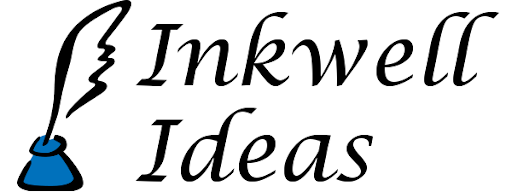Anatomy of an NPC Portraits Deck Card

As you may be aware, Inkwell Ideas is presently running a Kickstarter campaign featuring four distinct Sidequest Decks and four accompanying NPC Portraits Decks, each tied to a unique theme. For this discussion, we’ll delve into the structure of the NPC cards:
- Starting at the top, we present a name—critical for GMs often seeking quick NPC name solutions. In one of our decks, we’ve even included a small chart for additional name options in case you want more options.
- Just below the name, you’ll find the character’s ancestry, which could range from standard types like human or elf to more unique ones such as goblin or mummy, especially in our monster-themed NPC decks. Also at the top is the card’s number within the deck.
- Some of our earlier decks featured a brief line of D&D stats: ability scores, class, and level—easily adaptable to any edition of D&D or other preferred game systems.
- Moving on, we provide the roles the character may undertake, offering GMs a quick way to find suitable NPCs in various game situations—roles like Farmer, Storyteller, Wizard, Scholar, Guard Captain, and more. Most characters encompass two roles for versatility.
- Next, we elaborate on the character’s personality, granting insight into how the NPC interacts with others.
- Following this is the ‘Quirks’ section, offering valuable pointers on portraying the character, even aiding those less adept with accents. For example: A character tips everyone; Another always glances at a nearby object–can’t look you in the eye; A third character is always rubbing their hands. In other cases they can be strange things they keep or have such as a clever trained mouse or a detailed collection of personal journals.
- The content on the cards may vary, primarily by deck, with some skipping specific sections to allow for more space elsewhere. For instance, the ‘Need’ section describes a challenge the character faces, potentially involving the PCs in a problem-solving scenario.
- Another variable section is ‘Secret’, a tantalizing fact about the character, often serving as an enticing story hook. Most NPCs possess something they wish to conceal, potentially leading the PCs to uncover it and embark on an additional quest.
- In our Mini-Lairs/Guardians deck, many NPCs feature a ‘Defensive Tactics’ section, detailing the NPC’s combat strategy, preferred targets, or how they utilize the environment.
- The ‘Leverage’ section, present in all but our first couple decks, outlines how the NPC responds when intimidated, persuaded, or deceived, providing insights into influencing their behavior.
- Then comes ‘Background’, nearly ubiquitous on every card, offering the character’s history and path to their current role, shedding light on their development and motivations. As with the Secret & Need sections, this section also includes a possibly story hook or two!
- Lastly, we feature a quote on most cards—a catchphrase to help GMs quickly embody the character and enrich their role-playing interactions.
